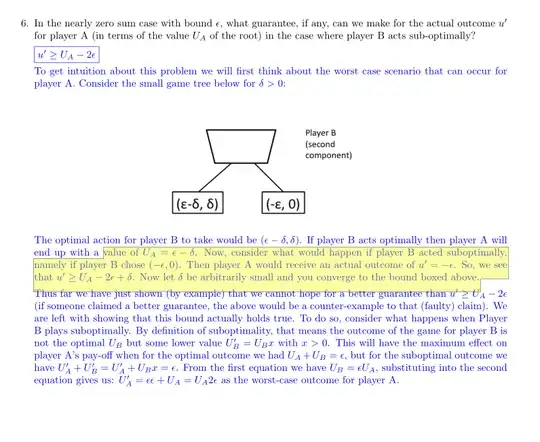I am drawing this question from Berkeley's AI course (also not sure if it is the correct place to ask, so I apologize ahead of time) https://inst.eecs.berkeley.edu/~cs188/pacman/course_schedule.html
Currently, I am working on section 3's Homework.
My question is: the question (Part 1, question 6). Why is it that we can only guarantee that if the Min agent acts suboptimally, the best we can hope for is the following 
It seems that we can put any arbitrary value for the second node e.g. whey does it have to be -Episolon. It could be any range of values, e.g. Epsilon, in which case we would have optimised the Player A